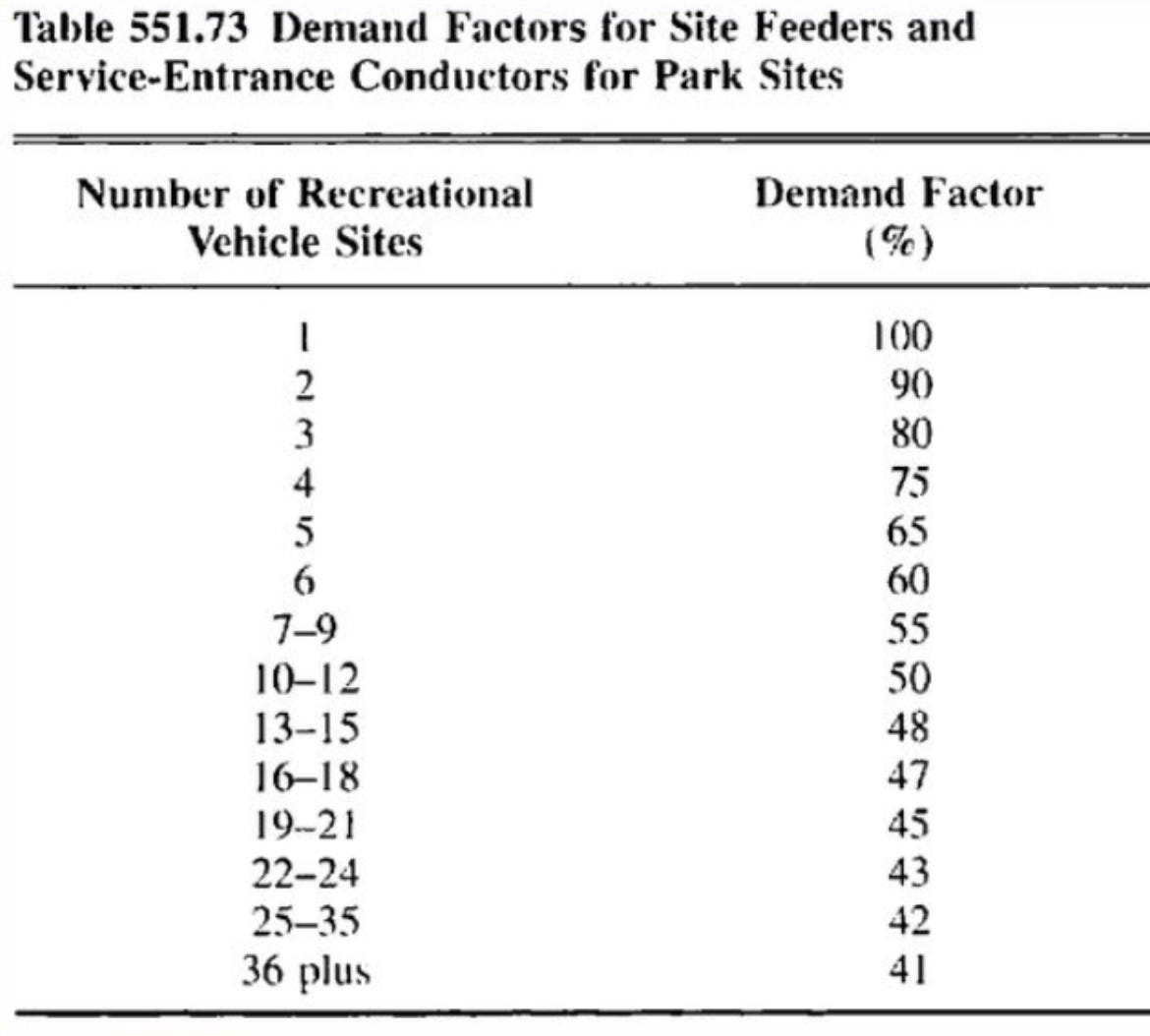Are there 150-amp pedestals?
Here's how this works according to the NEC, but you’re not going to like it…
Mike,
I am interested in campground pedestals, if this is answered somewhere already, please post a link.
A typical campground pedestal has 50 amp, 30 amp and 20 amp. So I see people running their 50 amp RV and plus something into the 20 amp receptacle (like a smoker for meat).
Are those pedestals wired to be able to use all of the receptacles simultaneously? I mean wouldn't it need 100 amp + 30 amp + 20 amp, so wiring coming into it need to be 150 amp service. I've seen the 30 and 20 amp receptacles piggy backed off the 50 amp wiring. Curious minds want to know :)
Thanks for all you do. - Joe T
Hey Joe
That’s opening up a whole can of worms. Per NEC, each pedestal in a campground is rated as requiring 12,000 VA of power from the service panel. That’s equal to one RV-50 receptacle at 50-amps per leg which is 100 amps at 120 volts total. A 50-amp pedestal only needs a 50-amp/240-volt split-phase service to be be fully powered according to the NEC and RVIA.
So it’s not really a 150-amp pedestal. In fact, it’s not even a 100-amp pedestal in a campground with 36 or more campsites!
Demand Factor
When designing campground power the builder gets to apply the demand factor to determine total power requirements for the entire campground. After adding up the individual sites throughout the park, the next step is to apply the Demand Factors found in Table 551.73(A) of the National Electrical Code (NEC). This Table allows for the derating of the park’s service amperage based on the total number of individual camping sites within the park.
For example: The demand factor for a service supplying just 1 RV site is 100%, which is just another way of saying that there is no allowable demand factor at all. But when there are 36 or more sites in the park, the demand factor from the Table is 41% of the total calculated load at 12kVA per pedestal, regardless of how many sites there are beyond 36.
This means the park electrical service can be sized at an ampacity no greater than what is necessary to adequately supply just 41% of the total load of 36 (or more) RV sites, instead of 100% for all 36 sites.
The same Demand Factor applies to a campground with 100 or more pedestals. In that case, 100 x 12kVA = 1,200kVA which you multiply by 41% (0.41) to get 492kVA total. Divide that by 100 and you get 4.92kVA (4,920 watts) per pedestal. Divide that by 120 volts and you’re back to 41 amps at 120 volts per pedestal. So it works out to 20.5 amps per leg of a 50-amp pedestal outlet.
This derating is permitted because the NEC assumes that campgrounds with more than 35 sites won’t be occupied and in full use at the same time. But I would suggest that’s incorrect thinking, since when the park is at 100% capacity on a holiday, the RV power needs will be at maximum since everyone will be using their air conditioners and appliances.
How much campground power is required by code?
Note that 41% of 12,000 VA is only 4,920 VA (watts) or 41 Amps at 120 Volts per pedestal. That’s just 20.5 amps Required for each leg of a 50-amp pedestal outlet!
No wonder there’s a huge voltage sag in full campgrounds during hot weather…
In short, a campground electrical service is not designed to supply full power to the 50, 30 and 20-amp pedestal outlets on each pedestal simultaneously. In fact, code doesn’t require that a large campground even supply full amperage to all of the 50-amp outlets by themselves.
Let’s play safe out there.. Mike








All building codes are based on occupant safety and meant to be used as a MINIMUM threshold. Facility owners are the ones that get to decide how much above that minimum their situation needs.
And as Mike mentioned, this is the threshold at time of original construction.
Maintenance and operations rarely have building code oversight, which is my main concern. The electrician they hire (possibly based on lowest price) to do a repair might not be familiar with RV power set-ups or minimum code requirements.
A derating makes sense, but 41% for large parks is unrealistic. I wonder how many parks end up blowing the MAIN breakers on hot days with a full park. The number of units with 3 air conditioners and residential fridges keeps growing. The low voltages are often exacerbated by in-park wiring sizes being too small. I wish that parks would overbuild above the NEC minimums, and advertise this as a perk!